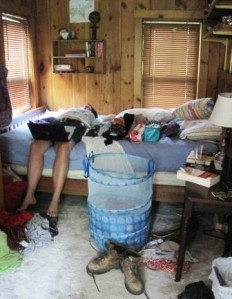The benefits of genderless apparel on the general well-being of children
Some rights reserved, tippi t via Flickr Creative Commons
It’s a sad reality that we now live in a world where parents now believe it’s acceptable to spend thousands of dollars on their children’s wardrobes. Sometimes mothers even end up spending as much as $170 on a single item of clothing that their kids will soon outgrow anyway, while they themselves end up scrimping on their own wardrobes, and even feeling bad about purchases for themselves.
There’s also a worrying trend emerging: parents dressing their kids to look like miniature adults – stylish, hip, and fashionable. But while it may seem tempting to dress our kids in the latest trends, is it really what’s best for them? Should LBDs become the next priority purchase for little girls, and high-cut sweaters for little boys? Or should responsible parents, in fact, start turning to something much more practical, like unisex clothing?
Cultivating a Culture of “Letting Children Be Children”
Katie Holmes often came under attack for letting her daughter Suri dress in clothes that seemed to be inappropriate for her age, wearing makeup and heels while she strutted down New York City streets. But the reality is that playing dress up is a long-established form of childhood play, and as long as children aren’t dressing in wildly inappropriate clothing or putting themselves at risk for hypo- or hyperthermia, then we should let them be.
Conversely, Angelina Jolie also received some backlash for letting her daughter Shiloh dress like a boy. “She likes tracksuits, she likes [regular] suits. She likes to dress like a boy,” she told Vanity Fair magazine. “She wants to be a boy. So we had to cut her hair. She likes to wear boys’ everything. She thinks she’s one of the brothers.” But this problem isn’t exclusive to girls either. Earlier this year, news broke out about a little boy who was taunted for wanting to dress like Sleeping Beauty for a schoolmate’s birthday party. Often, we end up imposing our own set of rules to our children, and forcing them to dress in what we think is appropriate.
This, however, shouldn’t be the case. Instead of basing our decisions for what our kids should wear on current trends, unisex children’s clothing designer Katie Pietrasik, founder of Tootsa MacGinty, tells Wales Online that decisions should be made based on the idea that “Clothes for children should be built for sturdier purposes than the changing vagaries of style – to be passed from sibling to sibling, or friend to friend regardless of gender.” As Clutch Magazine is quick to point out, while it’s nice to play dress up and photograph kids wearing stylish clothing, we have to ask ourselves, “are these outfits practical for everyday kiddie life?”
Unlike designer brands, unisex clothing is made with children’s lifestyles in mind. Comfort and practicality are key to unisex brands, allowing children to dress in appropriate styles, and still climb trees and play in jungle gyms. Rather than imposing stereotypes like “girls should sit at tea parties and play with dolls” and “boys should be little monsters”, unisex clothing encourages them to be themselves, and play at their own comfort levels. A child dressed to the nines in skinny jeans, a cropped top, or a little black dress may feel too intimidated to play at recess lest they dirty their clothes, but a child dressed in unisex clothing will feel confident enough to take on any and all of the day’s activities.
Let’s not forget that one of the most important things to remember when trying to build confidence in our kids is to let them make their own decisions. Sometimes, this could mean something as simple as letting them dress themselves, as Katie Holmes has often done with Suri. While her struggles with making sure that Suri dresses in clothing appropriate for the weather is all too real, investing in unisex clothing keeps these incidents to a minimum. Unisex clothing is easy to mix and match, and key pieces can be worn at all seasons. With items being made from quality, sturdy material, and most of them even being made to be adjustable to adapt to growth spurts, spending $170 on one outfit for our kids should soon be a thing of the past.




